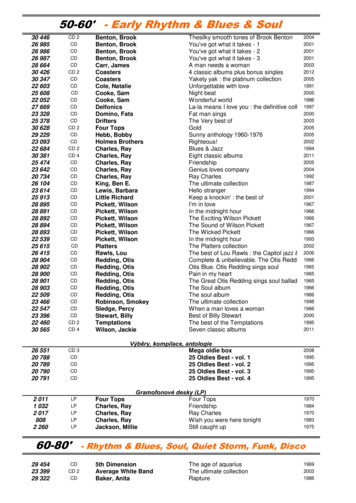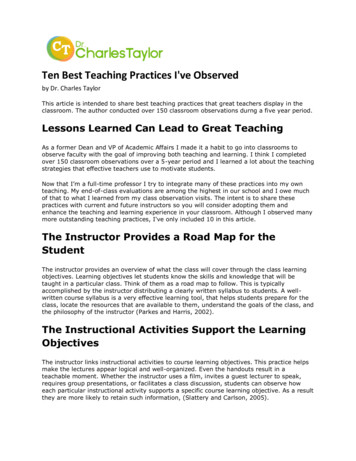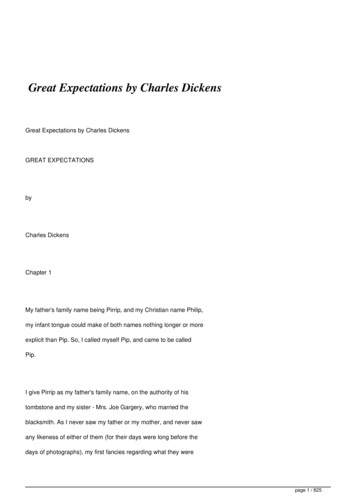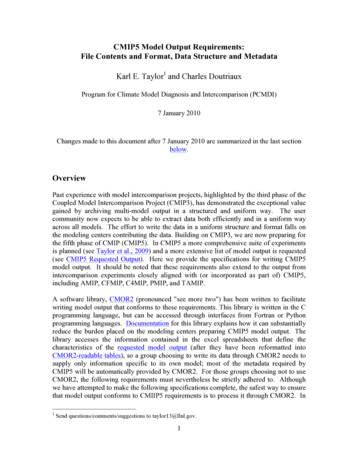
Transcription
CMIP5 Model Output Requirements:File Contents and Format, Data Structure and MetadataKarl E. Taylor1 and Charles DoutriauxProgram for Climate Model Diagnosis and Intercomparison (PCMDI)7 January 2010Changes made to this document after 7 January 2010 are summarized in the last sectionbelow.OverviewPast experience with model intercomparison projects, highlighted by the third phase of theCoupled Model Intercomparison Project (CMIP3), has demonstrated the exceptional valuegained by archiving multi-model output in a structured and uniform way. The usercommunity now expects to be able to extract data both efficiently and in a uniform wayacross all models. The effort to write the data in a uniform structure and format falls onthe modeling centers contributing the data. Building on CMIP3, we are now preparing forthe fifth phase of CMIP (CMIP5). In CMIP5 a more comprehensive suite of experimentsis planned (see Taylor et al., 2009) and a more extensive list of model output is requested(see CMIP5 Requested Output). Here we provide the specifications for writing CMIP5model output. It should be noted that these requirements also extend to the output fromintercomparison experiments closely aligned with (or incorporated as part of) CMIP5,including AMIP, CFMIP, C4MIP, PMIP, and TAMIP.A software library, CMOR2 (pronounced "see more two") has been written to facilitatewriting model output that conforms to these requirements. This library is written in the Cprogramming language, but can be accessed through interfaces from Fortran or Pythonprogramming languages. Documentation for this library explains how it can substantiallyreduce the burden placed on the modeling centers preparing CMIP5 model output. Thelibrary accesses the information contained in the excel spreadsheets that define thecharacteristics of the requested model output (after they have been reformatted intoCMOR2-readable tables), so a group choosing to write its data through CMOR2 needs tosupply only information specific to its own model; most of the metadata required byCMIP5 will be automatically provided by CMOR2. For those groups choosing not to useCMOR2, the following requirements must nevertheless be strictly adhered to. Althoughwe have attempted to make the following specifications complete, the safest way to ensurethat model output conforms to CMIIP5 requirements is to process it through CMOR2. In1Send questions/comments/suggestions to taylor13@llnl.gov.1
this document red text indicates that the user must be especially careful to adhere to thespecifications, since it will be very difficult for anyone else to determine whether or notthe information is correct. Compliance with the rest of the requirements is pretty muchguaranteed if the data is written with CMOR2. CMOR2 is distributed with a Pythonbased checker (check CMOR compliant.py). Output that has not been written throughCMOR2, but is thought to adhere to the requirements, may be passed through the CMOR2checker to catch some errors.The requirements for CMIP5 are similar to those required in CMIP3, but there are a fewmajor changes: Model output may now be contributed on any native grid, even one that is not aCartesian latitude-longitude grid. Filenames and directory structures are now mandated according to a definedtemplate. A number of additional global attributes are now required. A few new variable attributes are now required (when appropriate).The requirements for data contributed to the archive are listed in five sections below, thefirst specifying the general structure and format of the data, the second the directorystructure and names of files and directories, the third the required and recommended"global attributes", the fourth the metadata required for describing the coordinates, andlast the constraints imposed on the variables themselves.Data format, data structure, and file content requirements: Data must be written in the netCDF-3 format and conform to the CF metadatastandards. The output must be readable through the netCDF-3 API (applicationprogram interface) and conform to the netCDF “classic” data model. This meansthat if the data is written using the netCDF-4 API, the mode must be set toNC CLASSIC MODEL and do not invoke chunking/compression/shuffling. Each file must contain only a single output field from a single simulation (i.e., asingle run). Each file will also include coordinate variables, attributes and othermetadata as specified below. If the field is a function of time, more than one timesample (but not necessarily all time samples) may be included in a single file.Data representing a long time-series, typical of many coupled model simulations,will usually be split into several files, which should neither be too large (to beunwieldy) nor too small (as to create vexing I/O performance issues). Monthlydata, for example, might be divided into multi-decade chunks. It is recommendedthat the same size chunks should be used for all variables found in the same tableof the CMIP5 Requested Output. Note that when several tables are groupedtogether (e.g., under the single name “Amon”), each of the “sub-tables” should beconsidered as different tables when following the above recommendation. Forexample, 2-D and 3-D fields usually appear in separate “sub-tables” of “Amon”,and one could use different “chunk” lengths in this case, without violating therecommendation. There may be cases in which 2-D and 3-D fields appear in the2
same table, and there may be good reasons to choose different “chunk” lengths inthis case (going against the above recommendation). Some atmospheric fields that are functions of the vertical coordinate must beinterpolated to standard pressure levels (as specified in the CMIP5 RequestedOutput list of variables). Other fields (e.g., the 3-d cloud fraction) will reside onthe original model levels. There are different metadata and attribute requirementsspecified below for these two types of "3-d" fields. Oceanic fields that are a function of the vertical coordinate should usually bereported on the native grid.Structure and names of directories and names of filesThe IPCC database will comprise output from many different models, dozens ofexperiments, and perhaps several ensemble members, which have been sampled (oraveraged) in a number of different ways (e.g., monthly, daily, 3-hourly). The directorystructure for all of the output is specified in the “CMIP5 Data Reference Syntax (DRS)and Controlled Vocabularies” document, subsequently referred to here as the “DRSdocument”. The names of the directories must be drawn from the “controlled vocabulary”specified in the same document. Finally, the filenames themselves must strictly follow thetemplate given in the DRS document.The directory structure will be as follows (see the DRS document for definitions of thedifferent elements): activity / product / institute / model / experiment / frequency / modeling realm / variable name / ensemble member /Here are two mon/ocean/uo/r1i1p1/Note that model should be identical to model id, one of the global attributes describedin a subsequent section, except that the following characters, if they appear in model idshould be replaced by a hyphen (i.e., by '-'): ( ) . ; , [ ] : / * ? "' { } & and/or a “space”. If, after substitution, any hyphens are found at the end of thestring, they should be removed.The filenames will follow the template that is described more fully in the DRS document:filename variable name MIP table model experiment ensemblemember [ temporal subset ].ncNote that the temporal subset is omitted for variables that are time-independent (socalled “fixed” fields). For these “fixed” fields the ensemble member should invariably beset to r0i0p0, denoting that this field is valid for all “r”, “i”, and “p”. For gridspec files(which are “fixed” fields) the template is also slightly different in that the variable name is3
replaced by “gridspec” and a modeling realm identifier is added (see the DRS documentfor options).Note that variable name and MIP table together uniquely define the variable (exceptin the case of gridspec files where the modeling realm qualifier is also necessary).Here are two examples:tas Amon HADCM3 historical r1i1p1 185001-200512.ncgridspec atmos fx IPSL-CM5 historical r0i0p0.ncRequirements for global attributes:There are required attributes, optional standardized attributes, and the user may define anyadditional attributes thought to be useful. Required global attributes: branch time time in parent experiment when this simulation started(expressed in the units of the parent experiment). [Seeparent experiment id for more information about the “parent”.] Forexample, if the child run were spun off from a control run at a time of“2000” in the control run, and the time units in the control run were “dayssince 500-01-01”, then regardless of the units in the child experiment, theuser would store branch time 2000 (i.e., this time should be relative to thebasetime of the control, not relative to a basetime of 0-01-01 and notrelative to the basetime of the child). The branch time should be set to 0.0if not applicable (for example an AMIP run or a control run that was notinitiated from another run). contact name and contact information (e.g., email, address, phone number)of person who should be contacted for more information about the data. Conventions 'CF-1.4' creation date a string representation of the date when the file was createdin the format: “YYYY-MM-DD-THH:MM:SSZ” with replacement of all but“T” and “Z” by the obvious date or time indicator (e.g., “2010-03-23T05:56:23Z”). experiment a string providing a title for the experiment, as specified in thecontrolled vocabulary found in the table column labeled “ExperimentName” in Appendix 1.1 of the DRS document. experiment id a short string identifying the experiment, as specified in thecontrolled vocabulary found in the table column labeled “Short Name ofExperiment” in Appendix 1.1 of the DRS document. forcing a string containing a list of the “forcing” agents that should causethe climate to change in the experiment. A forcing agent will show somesecular variation due to prescribed changes in concentration or emissions(or in the case of land-use, change in prescription of surface conditions).Sometimes the change will be due to emissions of a precursor species thatrelatively quickly becomes transformed into the forcing agent itself (e.g.,transformation of SO2 emissions to sulfate aerosol.Changes in4
composition resulting from the simulated climate change itself should notbe counted as “forcing”; they are regarded as feedbacks. For a control runwith no variation in radiative forcing or for any other experiment for whichthere are no externally imposed changes in radiative forcing agents, set thisto “N/A”. Otherwise, the forcing should be expressed as a commaseparated list of identifying strings that are part of the so-called DRScontrolled vocabulary described in Appendix 1.2 of the DRS document.Within or following this machine-interpretable list may be text enclosed inparentheses providing further information. Use the terms in Appendix 1.2that are most specific (i.e., avoid “Nat” and “Ant”). If, for example, onlyCO2, methane, direct effects of sulfate aerosols, tropospheric andstratospheric ozone, and solar irradiance varied, then specify “GHG, SD,Oz, Sl (GHG includes only CO2 and methane)”. frequency a string indicating the interval between individual time-samplesin the atomic dataset. The following are the only options: “yr”, “mon”,“day”, “6hr”, “3hr”, “subhr” (sampling frequency less than an hour),“monClim” (climatological monthly mean) or “fx” (fixed, i.e., timeindependent). The sampling frequency is specified at the top of eachspreadsheet (cell G1) in CMIP5 Requested Output. For a few tables somevariables within the table are sampled differently, as indicated by an entryin the “frequency column (T) of the spreadsheets. initialization method an integer ( 1) referring to the initialization methodused or different observational datasets used to initialize. If only a singlemethod and dataset was used to initialize the model, then this argumentshould normally be given the value 1. For fields appearing in table “fx” inthe CMIP5 Requested Output, set initialization method 0 (violating thegeneral rule that it should be a positive definite integer). See the DRSdocument for guidance on assigning initialization method. Note that theinitialization method is used in constructing the “ensemble member”called for in the DRS document; it is the value of M in r N i M p L . institute id a short acronym describing “institution” (e.g., ‘GFDL’) ForCMIP5, the institute id should be officially approved by the CMIP Panel(through PCMDI). institution character string identifying the institution that generated thedata [e.g., 'GFDL (Geophysical Fluid Dynamics Laboratory, Princeton, NJ,USA’] model id a string containing an acronym that identifies the model used togenerate the output. For CMIP5, the model id should be officiallyapproved by the CMIP Panel (through PCMDI). It should be as short aspossible, so that it can be used, for example, in labeling curves on multimodel plots (e.g., as might appear in the Fifth Assessment Report of theIPCC). The acronym may include the acronym of the modeling center andthe model name/version separated by a hyphen (e.g., “IPSL-CM4”), but itmay be o.k. to omit the modeling center. Please note that you might in thefuture want to submit results from a successor to the present model, so ifappropriate, you may want to indicate a model version, but please keep it5
simple e.g., CCSM4, not CCSM4.1.2. Full version information will appearin the “source” global attribute described below. The model id, possiblymodified as necessary to eliminate characters not permitted by the DRS,will be used to construct directory and filenames. For further information,see the earlier section describing the directory and filenames. modeling realm a string that indicates the high level modeling componentwhich is particularly relevant. For CMIP5, permitted values are: “atmos”,“ocean”, “land”, “landIce”, “seaIce”, “aerosol” “atmosChem”, or“ocnBgchem” (ocean biogeochemical). Note that sometimes a variablewill be equally (or almost equally relevant) to two or more “realms”, inwhich case a primary “realm” is assigned, but cross-referenced or aliasedto the other relevant “realms”. The modeling realm(s) is (are) specified inthe “realm” column (S) of the spreadsheets found in CMIP5 RequestedOutput. parent experiment id experiment id indicating which experiment thissimulation branched from. This should match the experiment id of theparent unless the “parent” is irrelevant, in which case this should be set to“N/A”. The experiment id’s can be found in the table column labeled“Short Name of Experiment” in Appendix 1.1 of the DRS document. parent experiment rip identifier indicating which member of an ensembleof parent experiment runs this simulation branched from. This identifiershould be defined even when only a single parent experiment simulationwasperformed,butifparent experiment id ”N/A”,thenparent experiment rip should also be set to “N/A”. The “rip” value isconstructed from the “realization”, “initialization method”, and“physics version” of the parent experiment, using the template“r N i M p L ” to define the ensemble member. This template isdescribed under “ensemble member” in the DRS document. Whenpossible and not inappropriate, the child experiment should inherit the “rip”value from the parent. physics version an integer ( 1) referring to the physics version used bythe model If there is only one physics version of the model, then thisargument should be normally given the value 1. Note that model versionsthat are substantially different should be given a different “model id”;assigning a different “physics version” should be reserved for closelyrelated model versions (e.g., as in a “perturbed physics” ensemble) or forthe same model, but with different forcing or feedbacks active. In CMIP5,one would distinguish, for example, among runs forced by differentcombinations of “forcing” agents (as called for under the “historicalMisc”experiment – experiment 7.3) by assigning different values tophysics version. For fields appearing in table “fx” in the CMIP5Requested Output, set physics version 0 (violating the general rule that itshould be a positive definite integer). Note that the physics version is usedin constructing the “ensemble member” called for by the DRS document; itis the value of L in r N i M p L .6
product “output”, which indicates that the data you are writing is modeloutput. project id "CMIP5" for CMIP5. [For the “Transpose AMIP” project, itwill be assigned “TAMIP”.] realization an integer ( 1) distinguishing among members of an ensembleof simulations (e.g., 1, 2, 3, etc.). If only a single simulation wasperformed, then it is recommended that realization 1. For fields appearingin table “fx” in the CMIP5 Requested Output, set realization 0 (violatingthe general rule that it should be a positive definite integer). Note that iftwo different simulations were started from the same initial conditions, thesame realization number should be used for both simulations. For exampleif a historical run with “natural forcing” only and another historical run thatincludes anthropogenic forcing were initiated from the same point in acontrol run, both should be assigned the same realization. Also, each socalled RCP (future scenario) simulation should normally be assigned thesame realization integer as the historical run from which it was initiated.This will allow users to easily splice together the appropriate historical andfuture runs. A similar convention should be followed, when appropriate,with other simulations (e.g., the decadal simulations). Note that therealization can be used in constructing the “ensemble member” called forby the DRS document; it is the value of N in r N i M p L . [Note thatfor the “Transpose AMIP” project, the “realization” number is used todistinguish among the 16 members of each of 4 suites of runs (i.e., the 4“seasons”) generated from different observed conditions, spaced 30 hoursapart. So, for example, the 16-member ensemble of runs initialized at 00Zon 15 Oct 2008, 06Z 16 Oct 2008, 12Z 17 Oct 2008, and so-on, would beassigned “r1”, “r2”, “r3”, etc.] source character string fully identifying the model and version used togenerate the output. The first portion of the string should be a copy of theglobal attribute “model id”. Additionally, this attribute must include theyear (i.e., model vintage) when this model version was first used in ascientific application. Finally, it should include information concerning thecomponent models. The following template should be followed inconstructing this string: ' model id year atmosphere: model name ( technical name , resolution and levels ); ocean: model name ( technical name , resolution and levels ); sea ice: model name ( technical name ); land: model name ( technical name )'' Forsome models, it may not make much sense to include all these components,and nothing following “ year ” is absolutely mandatory. As an example,"source" might contain the string: 'CCSM2 2002 atmosphere: CAM2(cam2 0 brnchT itea 2, T42L26); ocean:POP (pop2 0 ver 1.4.3,2x3L15); sea ice: CSIM4; land: CLM2.0'. For some models it might beappropriate to list only a single component, in which case the descriptor(e.g., 'atmosphere') may be omitted along with the other model components(e.g., for an aquaplanet experiment: 'CAM2 2002 (cam2 0 brnchT itea 2,7
T42L26)'). Additional explanatory information may follow the requiredinformation. table id should be assigned a character string identifying the CMIP5Requested Output table where this variable appears. This string should beof the form “Table table name ” as it appears in cell F1 of thespreadsheets in CMIP5 Requested Output ”, followed by “( date oftable ”, where the date is the date of the requested output table (e.g.,“table id Table Amon (10 June 2010)”). tracking id a string that is almost certainly unique to this file and must begenerated using the OSSP utility which supports a number of differentDCE 1.1 variant UUID options. For CMIP5 version 4 (random ://www.ossp.org/pkg/lib/uuid/. The tracking id might look somethinglike: 02d9e6d5-9467-382e-8f9b-9300a64ac3cd. Optional global attributes comment A character string containing additional information about thedata or methods used to produce it. The user might, for example, want toprovide a description of how the initial conditions for a simulation werespecified and how the model was spun-up (including the length of the spinup period). history A character string containing an audit trail for modifications to theoriginal data. Each modification is typically preceded by a "timestamp".The "history" attribute provided here will be a global one that should notdepend on which variable is contained in the file. A variable-specific"history" can also be included as an attribute attached to the outputvariable. references A character string containing a list of published or web-basedreferences that describe the data or the methods used to produce it.Typically, the user should provide references describing the modelformulation here. title " model id model output prepared for CMIP5 experiment "where model id should be replaced by the contributing model’sacronym or name (see description above) and experiment should bereplaced by one of the experiment id’s found in the table column labeled“Experiment Name” in Appendix 1.1 of the DRS document. A sample titleis: 'IPSL-CM5 model output prepared for CMIP5 historical”Requirements for coordinate variables: All coordinate variables must be written as double precision floating point numbers(netCDF type NC DOUBLE). [Note that simple “index” dimensions are notconsidered to be “coordinate variables”.] The names for all coordinate variables are specified in the “output dimension name”column (C) of the “dims” table in CMIP5 Requested Output.8
The units for all coordinate variables are specified in the “units” column (H) of the“dims” table in CMIP5 Requested Output. For all time coordinates the units must be "days since basetime ", where basetime must be specified by the user, typically in the form year-month-day(e.g., "days since 1800-01-01"). Follow these rules: The same 'base time' should apply to all time samples in a single simulation(i.e., when creating a series of files containing model output for a singlerun, don't change the units or ‘base time’ from one file to the next; in theabove example 1800-01-01 is the 'base time'). For simulations meant to represent a particular historical period, set the ‘basetime’ to the time at the beginning of the simulation. A historical runinitialized with forcing for year 1850 would, for example, have units of“days since 1850-01-01”. The ‘base time’ used in the control run isirrelevant as is the time in the control run when the historical run wasinitialized. For the future scenario runs, retain the same ‘base time’ as used in thehistorical run from which it was initiated. For simulations not tied to a particular date, the ‘base time’ is arbitrary, but itshould correspond to the beginning of the run. Thus, in these simulations,‘base time’ is whatever time one decides to assign to the beginning of therun. All values of the time coordinate should be positive, which will be ensuredby following the above rules. For time-mean data, a time coordinate value must be defined as the mid-point of theinterval over which the average is computed. (More generally, this same ruleapplies whenever time-bounds are included: the time coordinate value should bethe mean of the two time bounds.) The “bounds” are required for certain coordinate variables as indicated by the“bounds?” column (K) of the dims table in CMIP5 Requested Output. Thebounds variable should be double precision. For grids other than Cartesian latitude-longitude grids, the output field can be afunction of 1, 2, 3, or more horizontal “dimensions”, depending on the naturallogical structure of the model’s grid. For these grids the dimensions will usuallybe simple index dimensions, and when they are, the dimension names should bedrawn from the list: ‘i’, ‘j’, ‘k’, ‘l’, ‘m’, or in the case of the CMIP5 cfSites tablethe index dimension should be named ‘site’, and in the case of the so-called“offline” variables in the CMIP5 cf3hr table, the index dimension should benamed ‘loc’. In some cases when there are two horizontal dimensions, thesedimensions might represent the earth according to a well-know map projectioninvolving actual spatial dimensions, in which case the names for these dimensionsshould be ‘x’ and ‘y’. In all of the above cases a “coordinates” attribute isrequired and should be attached to the output variable. This attribute will includethe string “lat lon”, indicating that variables lat and lon contain the latitude andlongitude coordinates. Those variables must have the standard names “latitude”and “longitude” respectively and must have the units “degrees north” and“degrees east”, respectively. In addition (except for the case of ‘site’ and ‘loc’)9
these coordinate variables must include “bounds” attributes pointing to‘lat vertices” and “lon vertices”, respectively, which should be stored arraysnamed lat vertices(lat,vertices) and lon vertices(lon,vertices), respectively. Thelength of the “vertices” dimension should be just long enough to accommodatethe maximum number of vertices needed to describe any cell in the grid. If a celldoes not have the maximum number of vertices, the remaining values should beset to 1.e20. Finally, it should be noted that in the case of the “offline” variablesin the CMIP5 cf3hr table, the longitude and latitude associated with each“location” depend on time, so longitude and latitude will be a function of locationand time. See example 6 below where data is stored which is not on a Cartesianlatitude-longitude grid . In addition for grids other than Cartesian latitude-longitude grids, a file recording allthe grid configuration information called for by “gridspec” must be created foreach modeling realm (atmosphere, ocean, land surface, etc.). For a coordinate representing model atmospheric level, the user must include in thefile all the information needed to positively and uniquely indicate the verticallocation of the data. Usually in this case the "formula terms" attribute must bedefined, and additional variables or parameters (and their attributes) will need tobe stored in the file (e.g., surface pressure and pressure at the top of the model foran atmospheric-sigma coordinate system, along with their units and standardnames, and possibly grid description information). The names of the variablesand parameters needed to describe each of the known vertical coordinate systemsare provided in Appendix 1 below. See example 5 below, and section 4.3.2 of theCF-conventions and Appendix D of the CF-conventions. Variables that are stored as a function of “basin”, “line”, or “type” (which aresimple index dimensions) will require auxiliary coordinate variables named“region”, “passage”, and “type description”, respectively, which are pointed to bya “coordinates” attribute attached to the variable. These will be netCDF typeNC CHAR and will be dimensioned region(basin, strlen), passage(line, strlen),and type description(type, strlen), respectively, where strlen is the maximumstring length. For each of these auxiliary coordinate variables, a long nameattribute and in the case of “region”, the standard name attribute should be storedas specified in the dims table of CMIP5 Requested Output. The values and orderof the labels stored in these auxiliary variables should be consistent with the listsfound in the “requested” column (S) of the dims table in CMIP5 RequestedOutput. The values and order of the labels stored in “type description” are notstandardized, but when possible should be selected from the CF conventions“Area Type Table”. Required attributes for coordinate variables: axis "X", "Y", "Z", or "T" as and if appropriate (see section 4 of the CFconventions). For a dimension that represents an axis other than a spatialor temporal dimension, this attribute should be omitted. Also omit thisattribute for grids that are not Cartesian latitude-longitude grids unless thegrid is logically represented as two-dimensional with these two dimensionsbeing actual coordinates (not simple index dimensions), in which case the“X” and “Y” axis attributes should be assigned as one would like to see a10
plotted figure of the field in that two-dimensional space. See example 6below. bounds a character string containing the name of the variable where thecell bounds are stored. Whether or not bounds are required for a givencoordinate is specified in the “bounds?” column (K) of the dims table inCMIP5 Requested Output. Usually, the bounds name should be the sameas the coordinate name, but with the suffix “ bnds” appended. For gridsother than those that are Cartesian in latitude and longitude, however, thebounds name should be the same as the coordinate name, but with thesuffix “ vertices” appended. For Cartesian latitude-longitude grids, the“bounds” variable should be a function of the coordinate and have a seconddimension (varying most quickly) of length 2 in the normal case. Forexample for a lon coordinate the bounds would be lon bnds(lon,2).2 Forother grids an example is lon vertices(lon,vertices). calendar (but for time coordinates only), one of the options described insection 4.4.1 of
Requirements for global attributes: There are required attributes, optional standardized attributes, and the user may define any additional attributes thought to be useful. Required global attributes: branch_time time in parent experiment when this simulation started (expressed in the units of the parent experiment). [See
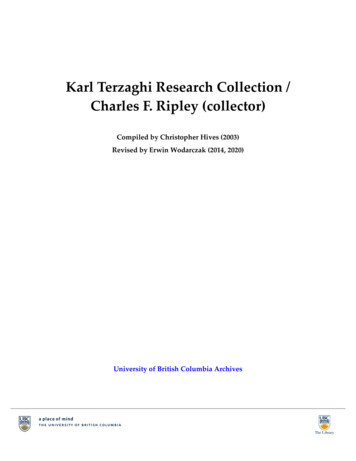
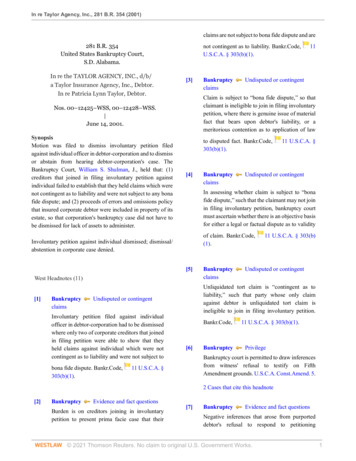

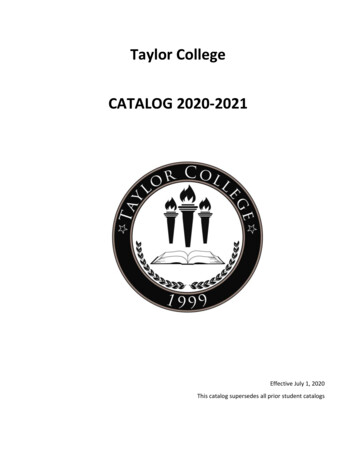
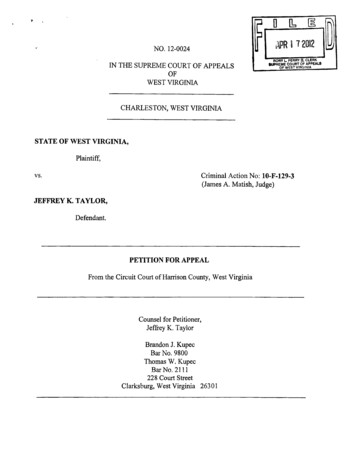
![The Book of the Damned, by Charles Fort, [1919], at sacred .](/img/24/book-of-the-damned.jpg)

